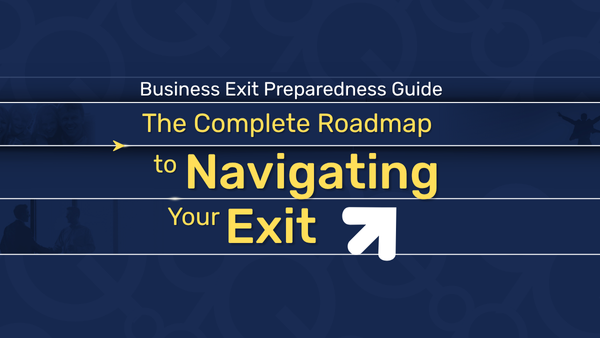At 9Q Exit Holdings, we acquire businesses from owners who are ready to move on. We don’t ask how big your top customer is—we ask how exposed you are to them.
For many founders, landing a major client is a badge of honor. That one anchor account that keeps the business steady, the team employed, and the numbers strong. But in an acquisition scenario, what feels like security to the seller often looks like risk to the buyer.
Customer concentration is one of the most underestimated—and frequently misunderstood—measures during exit planning. And if you don’t address it early, it could cost you more than a few deal points. It could cost you the exit itself.
When Revenue Becomes Risk

The rule of thumb in M&A is simple: when a single customer accounts for more than 15–20% of revenue, the buyer takes notice.
When that figure climbs higher, buyers don’t just notice—they worry. What happens if that customer leaves post-sale? What leverage does the customer have over pricing or terms? How dependent is the company on a relationship that can’t be transferred?
Founders who haven’t diversified often find themselves in awkward negotiations: reduced valuation, aggressive earn-out structures, or heightened diligence scrutiny.
In some cases, buyers walk away entirely—not because the business isn’t good, but because the risk-reward ratio is too fragile.

What Buyers Are Really Asking
When acquirers examine customer concentration, they’re asking:
- How durable is this revenue stream post-transition?
- Is the relationship contractually protected—or personally held by the founder?
- Is this customer paying above market—and will that continue under new ownership?
- If we lose them, how long before the business stabilizes?
The higher the dependency, the lower the valuation confidence.
Customer concentration doesn’t just create financial risk. It introduces operational fragility and integration complexity—two things buyers try hard to avoid.

Practical Steps to De-Risk Before Exit
Addressing customer concentration isn’t about cutting off large clients. It’s about strengthening your revenue model so that no single relationship defines the business. Here’s how:
1. Map Revenue by Risk, Not Just by Size
Start by evaluating your revenue distribution. Which customers represent over 15% of annual income? How many contracts are month-to-month versus long-term? Where do dependencies exist—financial, operational, or relational?
This analysis helps you prioritize which accounts need buffering and where new growth should come from.
2. Expand the Middle Tier
Focus on acquiring more mid-sized customers, not just small ones. A few $50K accounts reduce concentration risk more effectively than dozens of tiny clients with high churn.
Design offers, packages, or entry points specifically for that underrepresented middle band of the market.
3. Institutionalize Relationships
Ensure key accounts are managed by more than just the founder. Involve account managers, document processes, and standardize communications. This not only supports transferability—it sends a signal to buyers that the business runs on systems, not personalities.
4. Strengthen Contracts
Renegotiate terms with large clients where possible. Multi-year agreements, automatic renewals, or minimum spend clauses can turn perceived concentration risk into long-term revenue stability.
When a buyer sees strong contracts and clean documentation, they see strength—not vulnerability.
Turning a Red Flag into a Strategic Asset

Customer concentration, when left unaddressed, is one of the fastest ways to weaken your negotiating position in an exit. But when managed intentionally, it can be converted from a risk into a signal of quality.
At 9Q, we look for companies with not just strong revenue—but strong revenue structure. A business with distributed, reliable, and transferable income is far more valuable than one riding on a single signature.
Reducing customer concentration isn’t about growing for growth’s sake—it’s about designing for optionality. And in exit planning, that’s what puts you in control.
Sources:
Academic research on entrepreneur investment behavior, capital allocation decision-making, and wealth concentration risks has been published in multiple peer-reviewed journals including the Journal of Business Venturing, Entrepreneurship Theory and Practice, and Journal of Financial Economics. Literature reviews and meta-analyses on risk-adjusted returns, diversification benefits, and cognitive biases in investment decision-making can be found in various business and economics publications focusing on wealth management, portfolio theory, and entrepreneurial finance.
This article was prepared based on academic research and general industry observations on entrepreneurial investment psychology and wealth management challenges.







